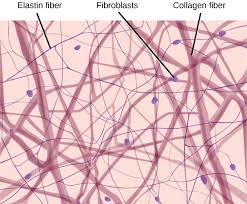
When I moved my newsletter to Substack, I had to give it a title. Connecting the Dots was taken (though it never seems to have been used), so I settled for The Dot Connecters. Not bad for a second prize.
Both versions of the title described what I was doing at the time but understate what I do now.
And will have to do more of.
As regular readers of The Dot Connecters know, Liz Hume, other colleagues at AfP, and I are developing our Peacebuilding Starts at Home strategy which we are gradually rolling out. It will involve plenty of dot connecting and more as we seek to shift American cultural norms and, in time, public policy.
Because I’ve taken three virtual side trips in the last couple of weeks and met Sam Pressler who wants to connect “tissue,” Vinay Orekondy who connects people via civic hubs, and Falls Church Forward, which is creating a civic hub in my (new) own backyard.
Let me explain.
Connecting Dots
While writing my book, I discovered that there are all kinds of interesting projects underway that you could think of as peacebuilding on steroids, I didn’t think that anyone else was doing much to stitch those efforts together into anything resembling a coherent whole.
As I finished writing and we developed the Peacebuilding Starts at Home initiative, I assumed that we would have to do a lot of the dot connecting work ourselves. Even purpose-built organizations like the Trust Network have a limited scope.
As a peacebuilder and political scientist, I love their focus on democracy, civil rights, violence prevention, and the like. Nonetheless, I sensed that we would have to take the lead in creating a movement or movements that threaded an important needle by both addressing all of the divisive issues facing our country and appealing to people of all political stripes, perhaps by avoiding discussing those divisive issues at least at first in ways that heighten those very divisions. As Gretchen and I have seen first hand in our work with Rotary, once you mention the word political, lots of people head for the proverbial hills before you even finish your sentence.
Far too few of them, too, approached the problems we face in a holistic way using anything resembling systems theory or complexity science. As a result, their work seemed far too scattered when we had to find ways of building bridges that cross ideological, issue-based, and social silos.
Still, at the very same time, as my beloved therapist, Dr. Whohasnoname, keeps reminding me, everyone she knows is grasping for meaning in their lives, which they find lacking in just about every mainstream institution they encounter.
As the French would say, faute de mieux, the clichéd ball kept coming back into our own court.
And Tissue
Then, over the course of the last couple of weeks, my eyes got opened when I realized that Sam, Vinay, and my new neighbors had all made tons of progress toward threading my needle in ways that will make our work easier because we will be able to build partnerships with them that they—not we—will take on a leadership role.
Sam started Connective Tissue as a conventional Substack newsletter that I read from time to time in which he asked questions like:
What will it take to seed and cultivate our generational project of civic and communal renewal?
From the beginning, he realized that connecting—tissues or dots—calls on Americans to be both “imaginative and practical, dreaming up new civic possibilities while pointing to tangible actions we can all take to realize these possibilities.”
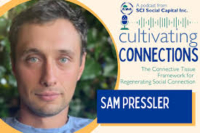 Within a year, the Substack grew beyond his wildest expectations, leading Sam to turn it into a membership network. I attended the first informational session (where I almost met my new neighbor, Evan Vahouny—see below.
Within a year, the Substack grew beyond his wildest expectations, leading Sam to turn it into a membership network. I attended the first informational session (where I almost met my new neighbor, Evan Vahouny—see below.
I then met with Sam one on one and discovered that we had plenty of friends and colleagues in common. We also realized that I see Putnamesque social capital building in more political terms than he does. For example, he fears that the term movement will drive some potential partners away, especially people who self-identify as conservatives.
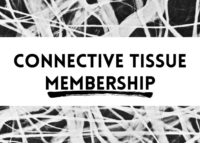
Since we met, I’ve been trying to find another word to use but have fallen short.
Suggestions?
Creating Hubs
At the International Listening Association conference, I met Vinay Orekondy, co founder of Better Together America. I had met his cofounder last fall but hadn’t quite realized how ambitious they were or how rapidly they would grow in the next year.
Most notably, they have helped create fifty of what they call civic hubs around the country. Each reflects local needs and the interests of the people who came together to create the hub.

As Vinay, Gretchen, and I talked at the conference and in a couple of meetings since, I realized that his team was doing a lot of the work that I had assumed that AfP would have to do in taking local work to scale by building bridges that connect local initiatives.
I was even more impressed when I realized that one of the hubs is in Scottsbluff, Nebraska and was being coordinated in part by Charles Lieske, whom I had met when we both served on the board of directors of the National Association for Community Mediation. In fact, Charles and I already had a Zoom session scheduled for the week after the ILA conference to discuss NAFCM’s future. Instead, we spent most of our time discussing with work with Better Tother America.
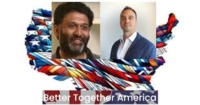
If anything, BTA has grown too quickly to be able to fully coordinate what its hubs are doing. It is our assumption that working with AfP and its other partners, we can continue and stabilize that growth.
And People in Falls Church
Regular readers also know that Gretchen and I recently moved all of eight blocks. Given the peculiar nature of Virginia’s hodge podge of cities and countries, that amounted moving into a new jurisdiction—the city of Falls Church—even if we kept the same zip code.
Because we had technically lived in in Fairfax County, we hadn’t paid much attention to Falls Church Forward even though it had been co-founded by our friend Pete Davis, who made the documentary about Bob Putnam, Join or Die.
It got brought back onto our radar screen, not by Pete who has had to move away, but by Sam Pressler, who had met one of its current leaders. So, I made contact and discovered that it was hosting a potluck which we attended on Sunday.
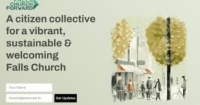
There, we discovered a classic example of the kind of network that he and Vinay are trying to create. Not only were there at least fifty people crammed into the host’s not very large backyard, but attendees included the mayor, two other city council members, a school board candidate, and a member of the local economic development commission—plus dozens of other people we didn’t get to meet.
We literally arrived at the same time as the mayor, her husband, and one of their children pedaled up. Since Letty Hardi and I had already exchanged emails and she knows Liz Hume (who is a long-time Falls Church City resident), it was easy to launch a conversation about Peacebuilding Starts at Home. The same was true with Justine Underhill who had sent us an amazing YouTube about improving traffic and urban design in general which she had begun putting into practice in her role as new member of the city council.

https://www.youtube.com/watch?v=v6LIYQRglnM
We also spent time with the guy who is helping plan the city’s celebration of our country’s 250th birthday for which I have already put him in touch with Mark Eckhardt who is trying to do the same things nation-wide via One Million Truths.
But mostly we came away with a real sense that we have moved into a vibrant community with a lot of what Putnam calls bridging social capital in which residents connect with each across lines of division.
And, when I suggested that they might want to work with one the hubs Vinay works with in Scottsbluff, Nebraska, everyone seemed excited.
And Next?
The next steps will begin a few hours after I post this on Substack and Linkedin.
Gretchen, Liz, and I will be meeting with Vinay later today to talk about how our organizations can work together more closely, including in ways that will take us far beyond the scope of work laid out here.
Meanwhile, I will reach out to my newfound friends in the corridors of power in Falls Church (there isn’t all that much power in a city of 15,000 crammed into two square miles). Given my book and responsibilities at AfP, most of my work will be national in scope.
However, given our commitment to local peacebuilding, it would be hypocritical of me not to get involved in what my new neighbors are doing.
Besides, they seem like a lot of fun.
The views and opinions expressed in this article are those of the author and do not necessarily reflect the official policy or position of the Alliance for Peacebuilding or its members.
